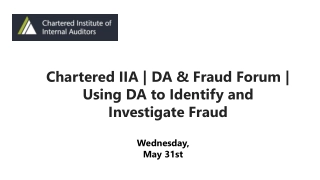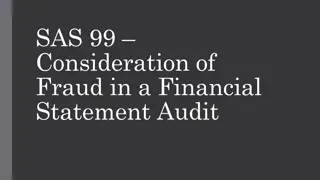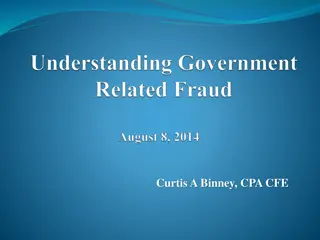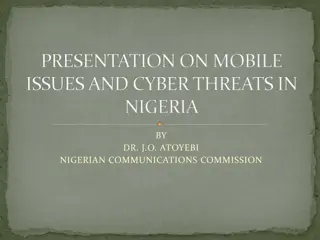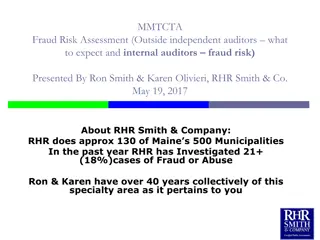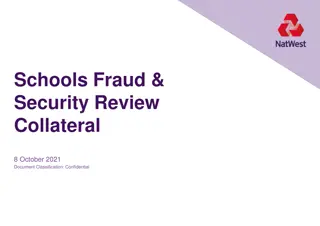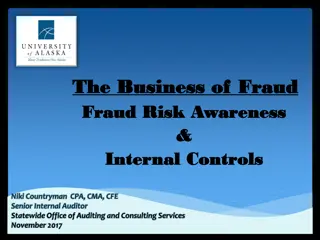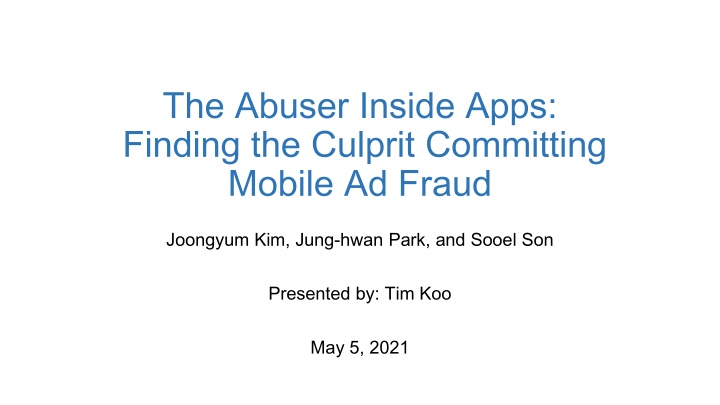
Unveiling Mobile Ad Fraud: Threats and Solutions
The rise of mobile ad fraud poses a significant challenge to security in the booming mobile ad market. Learn about click fraud, impression fraud, detection methods, and addressing limitations to combat this issue effectively.
Download Presentation

Please find below an Image/Link to download the presentation.
The content on the website is provided AS IS for your information and personal use only. It may not be sold, licensed, or shared on other websites without obtaining consent from the author. If you encounter any issues during the download, it is possible that the publisher has removed the file from their server.
You are allowed to download the files provided on this website for personal or commercial use, subject to the condition that they are used lawfully. All files are the property of their respective owners.
The content on the website is provided AS IS for your information and personal use only. It may not be sold, licensed, or shared on other websites without obtaining consent from the author.
E N D
Presentation Transcript
The Abuser Inside Apps: Finding the Culprit Committing Mobile Ad Fraud Joongyum Kim, Jung-hwan Park, and Sooel Son Presented by: Tim Koo May 5, 2021
Mobile Ad Fraud Operation that generates unwanted ad traffic The mobile ad market has been expanding explosively - $187 billion in 2020 (30.5% of the global ad market) As a result, mobile ad fraud has become a major problem to security Total loss due to mobile ad fraud expected to be 9%-20% Two types - Click fraud - Impression fraud 2
Click Fraud & Impression Fraud Click fraud - The attacker sends multiple click URL requests - Deceives users into clicking ad impressions Impression fraud - Hide ads underneath other visible elements - Invisible ads 3
Ad Fraud Detectors MAdFraud - Detects URL requests and their responses without interacting with app - If URL requests found, the app is fraudulent MAdLife - Compares pre-click and post-click log data and screenshots - If equivalent, the app is fraudulent Limitations - No user interactions what about fraud which requires user interaction? - Only looks at external behaviours pinpoint which module conducts fraud? - Requires emulators to test not an actual mobile device environment 4
Executing Apps & Collecting Logcat FraudDetective executes apps with a revised Android Open Source Project (AOSP) framework Finds ad fraud candidate (FC) - Sensitive Android APIs - Argument patterns eg) ad SDKs - Invocations of cross-app Intents The revised AOSP gives us an FC in Logcat logs 7
Full Stack Trace (FST) With the revised AOSP framework leaving FC, we compute FST FST shows the methods used to reach the FC from a program entry point Finds if there is a user-defined code by checking dispatchTouchEvent Solves the limitations! 8
Types of Ad Fraud Activities FraudDetective identifies three types of ad fraud activities Type-1 - Click URL request sent by a mimicked user click - Checks if there is a non-Android internal class in dispatchTouchEvent invocation Type-2 - Click URL request sent with no user interactions - FST finds click URL requests Type-3 - Invocation of other apps by a cross-app Intent - FST detects cross-app Intents Type-3 Example 9
FraudDetective in Action! Crawled 48,172 apps from Google Play Store FraudDetective reported 34,453 records of fraud activities from 74 apps 10
FraudDetective vs Other Detectors MAdFraud was not able to find 36 out of 74 apps because it does not interact with apps FraudDetective could detect all 30 apps MAdLife found (eight apps were not available or deprecated) FraudDetective could pinpoint which module triggered ad fraud 11
Thank you! 12

